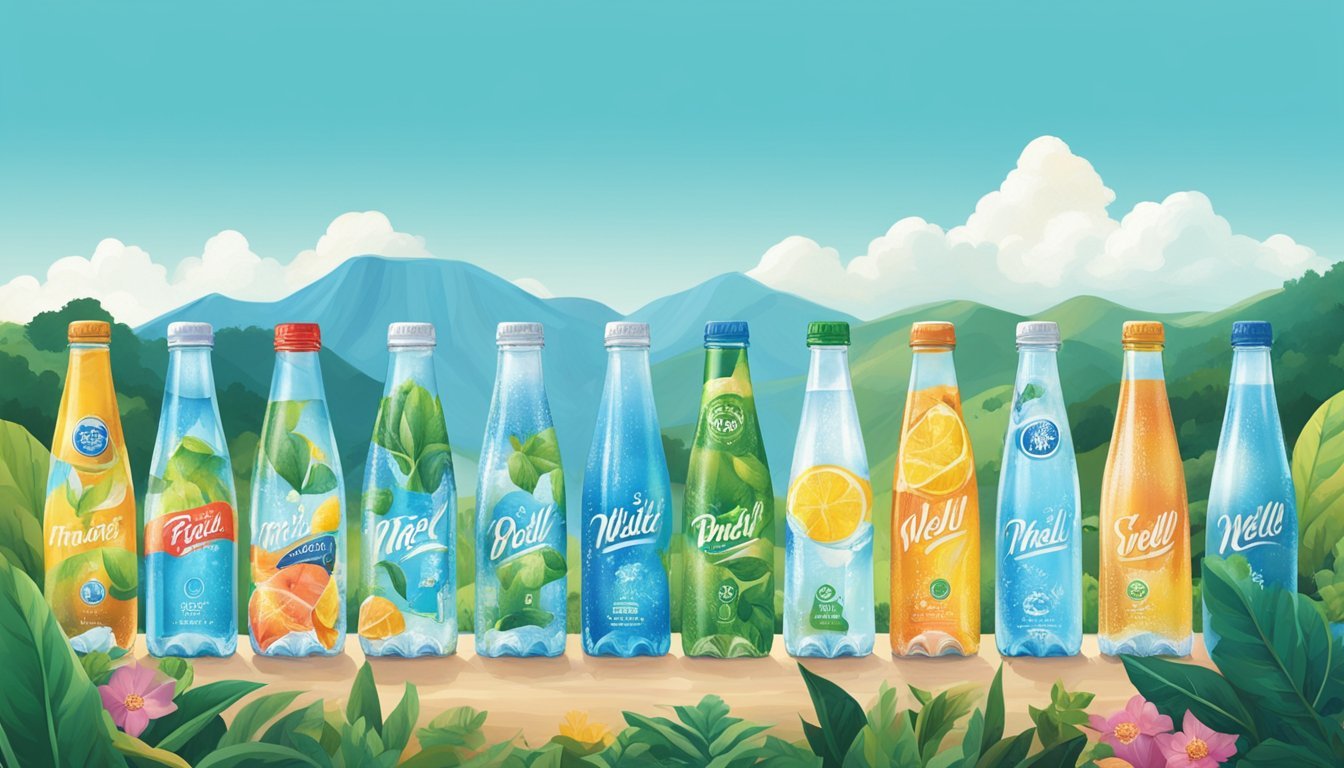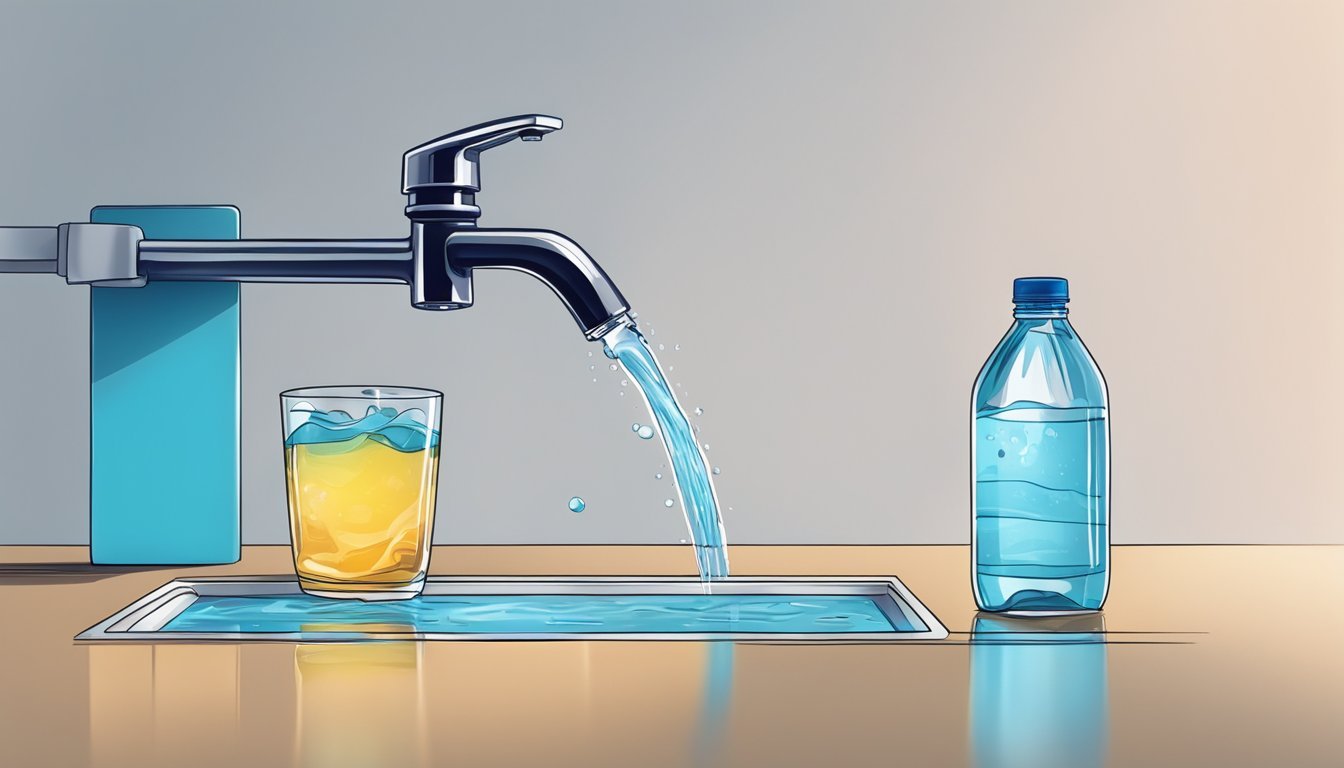Flow vs. The Well
Evaluating the Superior Bottled Water
When it comes to choosing between Flow and The Well bottled water brands, the decision often hinges on quality, taste, and price. Flow boasts an eco-friendly ethos with its alkaline spring water, which is rich in natural electrolytes and packaged in recyclable bottles. This makes Flow an attractive option for health-conscious consumers seeking a refreshing and sustainable choice.
On the other hand, The Well offers purified water that is known for its consistent taste and purity. By undergoing rigorous filtration processes, The Well ensures that the water is free from impurities, appealing to those who prioritize clean and crisp hydration. Each brand brings unique qualities to the table, making the choice largely dependent on personal preference and priorities concerning environmental impact and taste.
For readers seeking clarity on the superior choice, it's crucial to weigh the benefits of each. Whether you value the eco-friendliness and natural minerals in Flow or the pristine purification of The Well, knowing what each brand offers will help make an informed decision.
What Constitutes Flow and Well Waters
Flow and well waters come from distinct sources and have unique characteristics that set them apart. Understanding these differences is essential for consumers to make informed choices about their bottled water preferences.
Defining Flow Water
Flow water typically originates from a natural spring, which is an underground source where water flows naturally to the surface. The water is collected at the point where it emerges or is tapped through boreholes.
Spring water is often prized for its natural mineral content, which varies based on the geology of the area. This mineral content can affect both taste and potential health benefits. Brands that sell flow water usually highlight the purity and natural mineral profile, as well as the specific geographical location of the source.
Flow water remains under constant pressure from underground aquifers, ensuring a continuous supply. This pressure and the resulting movement usually minimize contamination risks from surface sources, providing a naturally filtered product.
Understanding Well Water
Well water, on the other hand, is drawn from an aquifer through an artesian well or a drilled well. Artesian wells draw water from confined aquifers, which are sand or rock layers that hold water under pressure. The water is extracted through natural pressure or mechanical pumps.
The mineral content in well water can be higher than in some other water types, which contributes to its taste and perceived quality. This water often comes from deep below the ground, where there is minimal exposure to contaminants from agricultural or industrial activities.
Natural disasters such as earthquakes or floods can impact aquifers, potentially altering the water quality. However, bottled well water is usually subject to stringent regulations to ensure safety and cleanliness.
Well water brands often emphasize the unique mineral profile and the deep-earth source that contributes to the water's character and benefits.
Health Implications of Water Choices
Selecting the right type of water can impact overall health, primarily through the presence of essential minerals, possible contaminants, and hydration benefits that support immune function.
Minerals and Health Benefits
Water, whether bottled or tap, contains essential minerals that contribute to health. Minerals such as calcium and magnesium are often found in both types of water.
Calcium supports bone health, while magnesium plays a role in muscle function and nerve transmission. Some bottled water brands add minerals for taste and health benefits.
Consuming water with these minerals provides a convenient way to meet daily nutritional needs, contributing to overall wellness and bodily functions.
Potential Contaminants and Risks
Both bottled and tap water can contain various contaminants. Common contaminants include lead, arsenic, and nitrates.
Tap water is regulated by municipal authorities, undergoing rigorous testing. However, it can pick up heavy metals from old pipes or pesticides from agricultural runoff.
Bottled water, although subject to regulations, might sometimes contain microorganisms or plastic contaminants from the bottling process. It’s essential to choose water that meets safety standards to avoid risks such as bacterial infection or exposure to harmful chemicals.
Hydration and Immune Systems
Staying hydrated is fundamental for immune system function. Proper hydration supports efficient nutrient delivery and waste removal in the body. Water is crucial for maintaining hydration, which in turn affects skin health, energy levels, and bodily functions.
Regular intake of clean water, whether from a bottle or tap, helps the body fight off viruses and bacteria by keeping the immune system robust. Both types of water can contribute to daily hydration needs, but ensuring the water is contaminant-free is key to supporting overall health.
Quality Testing and Safety Standards
Ensuring the quality and safety of bottled water involves stringent regulatory frameworks, precise testing methodologies, and comprehensible quality reports.
Regulatory Framework
The Environmental Protection Agency (EPA) sets standards for tap water, while the Food and Drug Administration (FDA) regulates bottled water. Both agencies ensure that water is free from harmful chemicals and contaminants.
The Safe Drinking Water Act mandates regular testing and reporting for public water systems. The Centers for Disease Control and Prevention (CDC) collaborates with these agencies to monitor water-borne diseases and public health.
Water Testing Methodologies
Bottled water undergoes various testing methods to ensure safety. These include distillation, reverse osmosis, and ultraviolet (UV) treatment. Each method targets specific contaminants like microorganisms, chemicals, and heavy metals.
Testing laboratories use EPA-approved techniques to measure levels of contaminants. Regular testing helps maintain compliance with FDA standards and ensures that the water remains safe for consumption.
Understanding Quality Reports
Quality reports provide detailed information on the water's source, treatment methods, and contamination levels. These reports are often required by state regulations and can be found on water labels or company websites.
The reports include data about microbial and chemical contaminants, ensuring that all safety standards are met. Consumers can use these reports to make informed decisions about the water they consume, comparing different brands' safety and quality levels.
Economic and Environmental Concerns
Flow and The Well bottled waters must be evaluated for their economic impact, environmental footprint, and the sustainability of their water sources. These factors are crucial in understanding which option is better overall.
Cost Comparison
Bottled water is often significantly more expensive than tap water. This is primarily due to the production and packaging processes. Flow and The Well are no exceptions, with both brands typically priced higher than most other beverages.
A gallon of single-serve bottled water can cost nearly 2,000 times the price of tap water. Though Flow and The Well promote quality and convenience, this economic disparity cannot be overlooked. Consumers must consider whether the higher cost is justified by the perceived benefits of these products.
Environmental Impact of Bottling
The environmental impact of bottled water is substantial due to the production, transportation, and disposal of plastic bottles. Manufacturing bottles for Flow and The Well requires significant energy and natural resources. Life-cycle analyses have revealed that bottled water has an environmental impact up to 3,500 times greater than tap water.
Transportation further increases the carbon footprint, as these products are often shipped long distances. Once consumed, the disposal of plastic bottles contributes to landfill waste and ocean pollution. These factors collectively cause extensive environmental damage.
Sustainability of Water Sources
The sustainability of water sources used by Flow and The Well is another significant concern. The Environmental Working Group has emphasized the importance of sourcing from renewable and contaminant-free water supplies. Unsustainable extraction practices can deplete natural reserves and disrupt local ecosystems.
Both brands must ensure their water is sourced responsibly to maintain ecological balance. Sustainable infrastructure and regular monitoring are critical in ensuring these practices do not result in long-term harm to the environment or exacerbate water scarcity.
In evaluating bottled water brands like Flow and The Well, economic feasibility, environmental repercussions, and sustainable sourcing are crucial criteria. These considerations ensure that consumer choices align with both financial sensibility and environmental responsibility.
Practical Aspects of Water Consumption
Understanding the practical aspects of water consumption involves examining taste preferences, convenience, accessibility, and the required maintenance and infrastructure. These factors play a critical role in deciding between bottled water, tap water, and water from a private well.
Taste and Personal Preference
Taste can be a significant factor. Bottled water brands like Flow and The Well often claim to have superior taste.
This perception is influenced by the water source and treatment processes. Municipal water, treated with various chemicals, may have different flavors compared to bottled water.
Some bottled waters, including those from private wells, are marketed based on their clean and natural taste, free from the distinct chlorine notes found in tap water.
Convenience and Accessibility
Convenience is another key aspect. Bottled water is seen as convenient because it is portable and sealed for safety.
Tap water, connected to a municipal or public water system, is nearly always available in homes, making it very accessible.
For private well users, the convenience can vary. They rely on pumps and may need additional filtration to ensure water safety.
Maintenance and Infrastructure
Maintenance and infrastructure are essential elements. Public water systems require little maintenance from the user but do have infrastructure costs covered through taxes.
Private wells demand regular maintenance—inspecting pumps and testing for contaminants. Users often install carbon filters or advanced water filters to deal with hard water and other impurities.
For bottled water, infrastructure involves production and transportation, contributing to its higher cost compared to tap water. Regular purchase also becomes a recurring expense.
Making an Informed Decision
Choosing between Flow and The Well bottled water involves evaluating personal preferences, health benefits, and overall cost-effectiveness. Assess how each brand's features align with individual needs and lifestyle choices, ensuring the decision supports well-being and budget constraints.
Analyzing Personal Needs and Factors
Consumers should start by identifying their unique needs. This can include taste preferences, mineral content, and convenience. For instance, Flow may be preferred for its alkaline properties and eco-friendly packaging.
Conversely, The Well might appeal for its mineral content or pricing. Comparing bottle sizes, presence of contaminants, and availability can also influence decisions. Keep in mind any dietary restrictions or health conditions that might dictate your choice. Personal priorities will largely dictate the most suitable option.
Water as Part of a Healthy Lifestyle
Water quality significantly affects health. Good hydration supports skin health, digestion, and overall bodily functions. Both brands should ideally be free from harmful contaminants.
Flow promotes its naturally alkaline water, which may aid in balancing body pH levels. Ensure that daily water intake from either brand fits into an overall diet plan. Preference for low-sodium options, absence of residues, and certification from health authorities should guide the decision.
Conclusion
To make an informed choice, consumers need to balance cost, health benefits, and personal preferences. Evaluating long-term benefits versus immediate satisfaction can help in selecting between Flow and The Well.
Consider both brands' marketing claims and independent reviews to gather accurate insights. Thoroughly comparing their impacts on health and budget will ensure a suitable, sustainable drinking water option.
More About Flow
Flow vs Whole Foods Italian Still Mineral water: Which Bottled Water is Better?
Mountain Valley Spring Water vs Flow: Which Bottled Water is Better?
More About The Well
Cascade Mountain vs The Well: Which Bottled Water is Better?
Hawaiian Springs vs The Well: Which Bottled Water is Better?
Icelandic Glacial vs The Well: Which Bottled Water is Better?
Mountain Valley Spring Water vs The Well: Which Bottled Water is Better?
Nestle Pure Life vs The Well: Which Bottled Water is Better?
Richard's Rainwater vs The Well: Which Bottled Water is Better?
The Well vs Kirkland Signature: Which Bottled Water is Better?
The Well vs Talking Rain AQA: Which Bottled Water is Better?
Whole Foods Italian Still Mineral water vs The Well: Which Bottled Water is Better?





